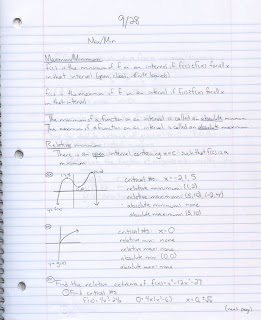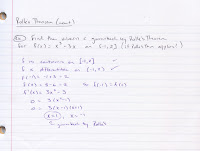
We didn't get to maximum/minimum or relative maximum/minimum today; that'll be tomorrow.
Basically, a critical number is a defined point (c,f(c)) on f(x) where f'(c) is zero or f'(c) is undefined. AKA when a function goes from increasing to decreasing or vice versa.
An interval [a,b] is increasing if f'(x)>0 for all x in (a,b)
An interval [a,b] is decreasing if f'(x)<0 for all x in (a,b)
The critical number can be used to find the increasing and decreasing intervals of a function. Make a number line, mark all critical numbers, and plug one number from each section created into the derivative equation to determine increasing and decreasing intervals.









